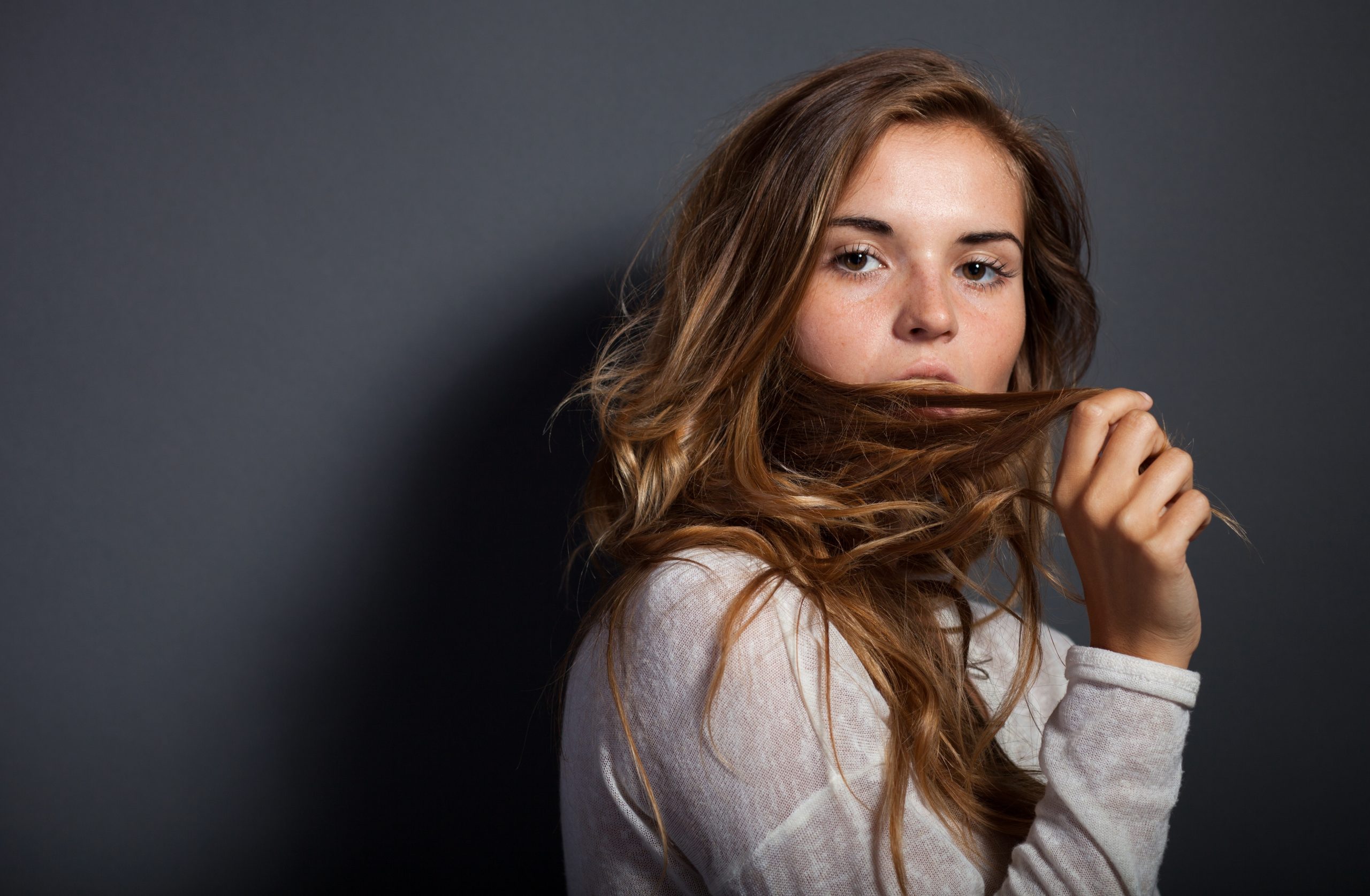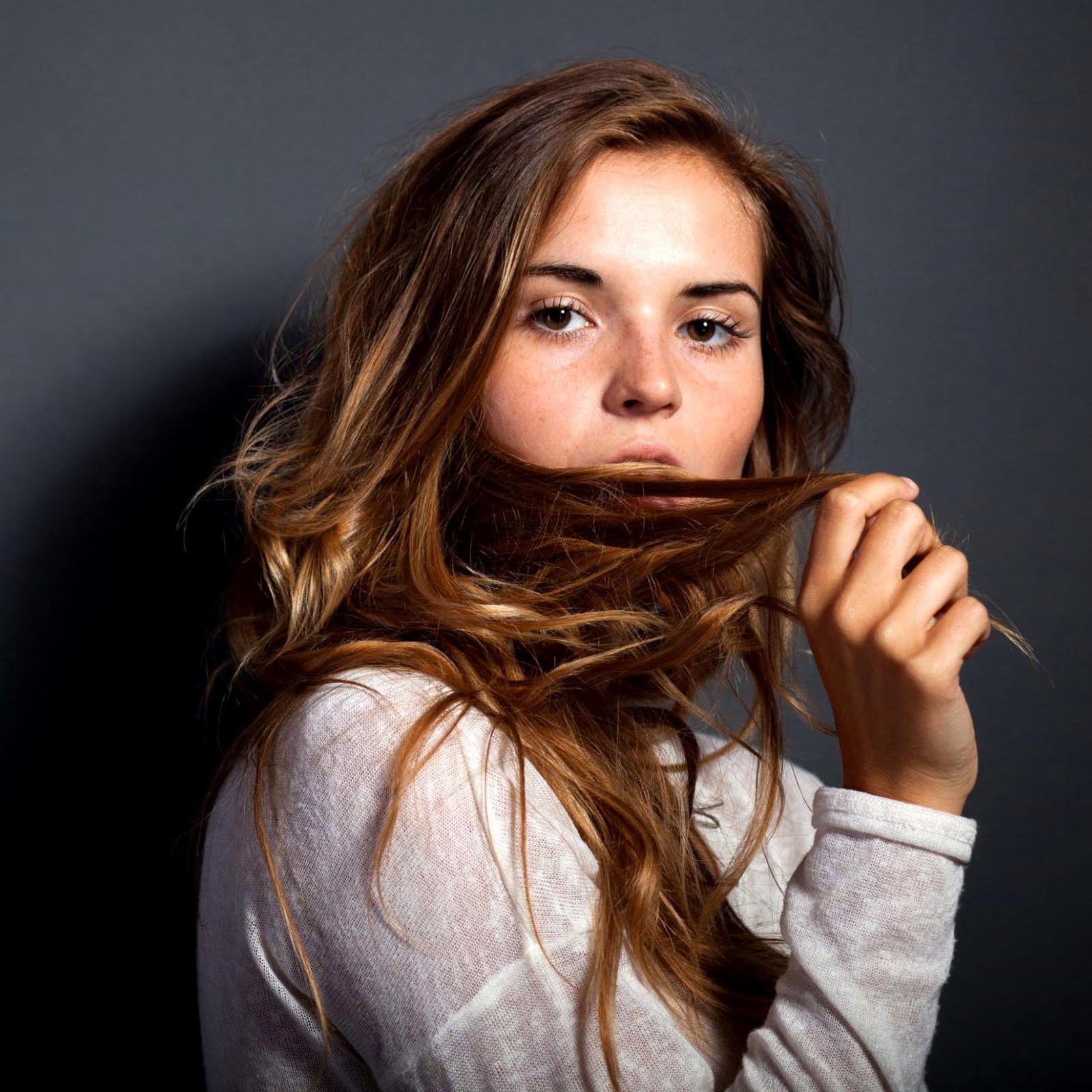We’ve all had our fair share of bad hair days— you know, where it just seems like absolutely nothing is going right. Maybe your strands aren’t being cooperative or maybe you’re battling a ton of frizz. Regardless of what the actual issue is, it can totally put a damper on your mood and, in some cases, even ruin your entire day. Well, imagine if everyday was a bad hair day. For people with trichotillomania, that is their actual reality.
Unless you have trichotillomania, you’ve probably never heard of it before. Trichotillomania—also known as TTM or “trich” — is a behavioral disorder that consists of compulsively pulling out one’s own hair.

According to the TLC Foundation for Body-Focused Repetitive Behaviors, research suggests that about 1 or 2 in 50 people experience hair pulling in their lifetime and 80-90 percent of reported cases are women. And, this reported group even includes a few famous faces: Olivia Munn, Megan Fox, Katy Perry, and Amy Schumer have all been outspoken about their experiences with trichotillomania.
Given how much of an impact hair loss can have on a person’s mental health, it’s extremely important for stylists to understand what trichotillomania is, how it manifests itself both physically and mentally, and how they can better serve their clients dealing with the disorder.
Ahead, here’s everything you need to know about trichotillomania.
What is trichotillomania?
“Trich or TTM is also known as a hair pulling disorder,” says hairstylist Sheila Chung, who specializes in working with people with trichotillomania. “Trich is one of a group behavior known as Body-Focused Repetitive Behavior (BFRB), where the individual pulls hair from their body, face, and head.” According to Mayo Clinic, trichotillomania typically tends to develop right before or during a person’s early teens and can be triggered by stress and anxiety. And while there are different methods of therapy—including habit reversal training, cognitive therapy, and acceptance and commitment therapy—that can help a person with trichotillomania, there is currently no known cure for the disorder.
With trichotillomania, hair pulling can happen consciously, where the person recognizes the behavior but is unable to stop; or unconsciously, where the person doesn’t realize they are performing the behavior. While people with trich can pull hair from any part of their body, the most common “pull sites” are usually on the head, specifically areas around the crown, the temples, and behind the ears. The tell-tale sign of compulsive hair pulling is bald patches on the scalp.
How can having trichotillomania affect a person’s mental health?
But, it’s not just the physical effects of trichotillomania that can be hard to deal with. Compulsive hair pulling can take quite a toll on an individual’s mental health, too. “It can have a huge impact on their mental health: not knowing why they pull, feeling like they are the only ones who do this, not being able to do simple things like swimming or walking on a windy day, being afraid their spot might show or that may be bullied/made fun of,” Chung says. “On top of that, if they already have anxiety or depression, it’s a lot to handle.”
Trichotillomania can also negatively impact the relationship that a person has with their hair. “They may feel like they never have a good hair day or look good. Always struggling to hide their spots. Constantly wearing their hair up or in a hat,” she explains. “I know my clients will say their friends will ask why their hair is always up or why don’t they ever wear it down. All of this causes more anxiety for them.”
How has the pandemic impacted those with trichotillomania?
“I know that during the pandemic most have pulled more just with the stress of the unknown,” Chung says. “Also, my clients were stressed out not knowing when they could come in for a maintenance appointment. I do a lot of hair bonding and extensions and it’s very time sensitive. If I don’t see them in time and the piece is falling off or extensions have grown out too much then that will lead them to want to play with it and pull more.”
But, for some with trichotillomania, the pandemic has proved to be somewhat beneficial. “I’ve had a handful of girls tell me they actually pulled less because they are in the comfort of their own home, not stressing at work and it was more relaxing to them,” she says. “Everyone’s triggers are different.”
How can stylists help clients with trichotillomania?
According to Chung, when it comes to assisting clients with trichotillomania, the most important thing is for the stylist to be educated—particularly when it comes to knowing where to send a client if you don’t know how to handle the disorder. She recommends the TLC Foundation for Body-Focused Repetitive Behaviors’ website as a great resource for information on trich.
In addition to being knowledgeable on trich, Chung adds that knowing what not to say to clients is also key.
“Simple things like, ‘Why don’t you just stop?’, can really put the client off. Clients just want to feel normal and not judged while sitting in the chair,” she explains. “I have heard so many stories of where my trich clients would go to a different stylist every time and make up different stories about what happened to their hair, or where stylists would bring their coworker to look at the client’s hair, causing more attention. All of this is very traumatizing to the client which leads them to never wanting to step foot in a salon again.”
Instead, she suggests not mentioning anything unless the client feels comfortable enough to bring it up. “Treat them like a regular client,” she says.
And, as far as helping trich clients mask or hide their bald spots, Chung has a go-to few styling tips and tricks for stylists.
“If they have hair, but it’s just short in the area then you can use hair fibers to help thicken the area,” she explains. “I do a bonding method which helps cover the areas they pull so they can’t get to it. I don’t shave the hair so the hair is allowed to grow underneath. The piece lays flat to the head so it looks as natural as possible.”
She goes on to add that hair extensions can also help hide the area and do a great job of filling in where hair would be as far as the length when wearing it down. For bald spots, she tends to be a fan of using a color spray to help mask those areas.
Ultimately, choosing the best trich-friendly styling method will all depend on your client. “Not one method fits for everyone,” Chung says. “Everyone has different triggers, so it’s important to figure out which method works for that particular person.”
For more Chung’s trich-friendly styling tips, be sure to follow @sheilachung_hair on Instagram.


